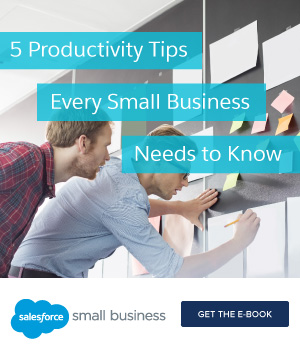
Get your FREE 30-day trial.
Please complete all fields.
Productivity is my holy grail. It’s taken me a few years to realize that what makes me happiest (after, of course, a beach vacation or a powder day) is to end each day with the knowledge that I’ve accomplished something. Not just something, actually; a lot of things. I want to feel like I got a bargain — like I squeezed more out of one day than most people manage to squeeze out of a three-day weekend.
Despite this, I spend a lot of time not being productive. We all do. It’s those 20 minutes spent dealing with email threads that have nothing to do with you, or the half-hour when you’re sitting at the back of a meeting that doesn’t need to happen, trying to multi-task (which, while we’re on the subject, does not work).
I haven’t achieved total productivity just yet, but in the course of several deadline-oriented, juggling-focused jobs, I’ve made a lot of progress. So here, without further ado, are my four secrets.
 1. Prioritize
1. PrioritizeFor me, this is the hardest one, but it delivers the biggest payoff. Set your priorities, and protect them as rabidly as you can without seeming — well, actually rabid. I make a priority list every week, and as new tasks arise, I prioritize them against what’s already on the docket. When new demands come in that don’t fit into my top 10 for that week, I try my best to refrain from putting too much time or effort into them.
This one can be tricky, but it can also be a game-changer. Toggl is a user-friendly timer app that tracks how much time you’re spending on which projects. My long-term projects also have priority numbers , which I attach to them in Toggl to see how much time I’m spending on low-priority and high-priority stuff. (Warning: results may be depressing at times.) Trello is a project management tool that can be helpful for categorizing, ordering, and collaborating on projects; chat apps like Slack can help make your email inbox a lot more manageable. There are tons of options out there. The key is finding tools that feel intuitive to you — that way, you’ll actually use them.
These days, it’s hard to imagine leaving the office for a lunch or a meeting and not being reachable (apparently people used to do that, which is also probably also how they got away with all those lunchtime martinis).
But all the tech in the world won’t do you any good if it’s not mobile. Shameless plug: I actually love the Salesforce1 Mobile App, because it’s a central access point for almost everything work-related I need when I’m away from the office — presentation files, coworker contact info, performance data, Chatter, even a feed of marketing content that shows me what our team is working on. All of my favorite external apps are mobile, too — what’s the point of a to-do list you can’t access during your commute? Don’t get invested in a tool until you know it’s mobile.
If you’re a productivity fiend like me, you’ll love this one, because it has the power to make almost any experience feel productive. Whether you’re sitting in a meeting, having lunch, or madly making lists on your personal whiteboard, it’s not worth your time if it doesn’t lead to action! At the end of every meeting, I try to save 5 minutes to agree on action steps. If there’s time, I add them to my (mobile) to-do list then and there — and if I’m really on it, I slot them exactly where they belong in the priority list.
These 4 ideas are, of course, the tip of the iceberg. I mean, people write entire books on this stuff — in fact, we did! For more insights, check out our e-book, 5 Productivity Tips Every Small Business Needs to Know.
Alexa Schirtzinger is Director of Content Marketing at Salesforce.